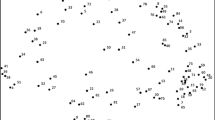Abstract
In 1997 a medium-size Midwestern public university in the U.S. initiated a first year experience program. The program is designed to infuse added curricular and extracurricular components into core courses in an effort to integrate students into the university community. This article examined the FYE impact on grade point average (GPA) and retention after 1 year for the fall 2006 cohort of entering students. The findings suggest no positive FYE effect on retention, but on average FYE students earned higher GPAs than non-FYE students. Reducing the sample to include only courses identified as goal compatible FYE courses yielded a positive effect on retention and also accentuated the GPA differential. The estimated positive FYE impact on retention was larger for below average students (especially females) and smaller for above average students.
Similar content being viewed by others
Notes
The timing of orientation is important because FYE course availability may be limited for students who attended later orientation sessions.
References
ACT. (2007). http://www.act.org/research/policymakers/pdf/retain_trends.pdf.
Barefoot, B. O. (2000). The first-year experience: Are we making it any better? About Campus, 5, 12–18.
Crissman, J. L. (2001–2002). The impact of clustering first year seminars with english composition courses on new students’ retention rates. Journal of College Student Retention: Research, Theory and Practice, 3(2), 137–152.
Day, J. C., & Newburger, E. C. (2002). The big payoff: Educational attainment and synthetic estimates of work-life earnings. Washington, DC: U.S. Census Bureau.
Fidler, P. P., & Moore, P. S. (1996). A comparison of effects of campus residence and freshman seminar attendance on Freshman dropout rates. Journal of the Freshman Year Experience, 8(2), 7–16.
Goodman, K., & Pascarella, E. T. (2006). First-year seminars increase persistence and retention: Evidence from how college affects students. Peer Review: Emerging Trends and Key Debates in Undergraduate Education. The Association of American Colleges and Universities, 8(3), 26–28.
Hendel, D. D. (2006–2007). Efficacy of participating in a first-year seminar on student satisfaction and retention. Journal of College Student Retention: Research, Theory and Practice, 8(4), 413–423.
Hotchkiss, J. L., Moore, R. E., & Potts, M. M. (2006). Freshman learning communities, college performance and retention. Education Economics, 14(2), 197–210. doi:10.1080/09645290600622947.
Pascarella, E. T., & Terenzini, P. T. (2005). How college affects students: A third decade of research (Vol. 2). San Francisco, CA: Jossey-Boss.
Porter, S. R., & Swing, R. (2006). Understanding how first-year seminars affect persistence. Research in Higher Education, 47(1), 89–109.
Potts, G., Schultz, B., & Foust, J. (2003–2004). The effect of freshmen cohort groups on academic performance and retention. Journal of College Student Retention: Research, Theory and Practice, 5(4), 385–395.
Schnell, C. A., & Doetkott, C. D. (2002–2003). First year seminars produce long-term impact. Journal of College Student Retention: Research, Theory and Practice, 4(4), 377–391.
The College Board. (2005). Education pays. Washington, DC: The College Board.
Tinto, V. (1987). Leaving college: Rethinking the causes and cures of student attrition. Chicago, IL: University of Chicago Press.
Tobolowsky, B. F., Mamrick, M., & Cox, B. E. (2005). The 2003 national survey on first-year seminars: Continuing innovations in the collegiate curriculum. Columbia, SC: University of South Carolina, National Resource Center for the First-Year Experience and Students in Transition.
U.S. Department of Education. (2006). National Center for Education Statistics. http://www.nces.ed.gov/ipeds/.
U.S. News & World Report. (2008). U.S. News and World Report on college rankings. http://colleges.usnews.rankingsandreviews.com/usnews/edu/college/rankings/about/weight_brief.php.
Author information
Authors and Affiliations
Corresponding author
Appendix A
Appendix A
Rights and permissions
About this article
Cite this article
Jamelske, E. Measuring the impact of a university first-year experience program on student GPA and retention. High Educ 57, 373–391 (2009). https://doi.org/10.1007/s10734-008-9161-1
Received:
Accepted:
Published:
Issue Date:
DOI: https://doi.org/10.1007/s10734-008-9161-1




